Are you a construction site contractor and you need a source of power to run all your tools? Are you doing a home renovation job but you are not able to connect to the electric power? Then you need a portable generator.
I have great news for you! Our team here at Generatorist has helped over 600,000 visitors find information about generators and we will help you as well.
Different job sites will require different sizes of generators. Based on the data we were able to access, we have identified at least three types of generators you should consider:
SMALL BACKUP UNITS (1,000 TO 5,500 WATTS)
If you are doing mostly small jobs or ones that require only one or two power tools running at the same time, then these units will be perfect for you. They can be carried around the workplace and do not take up too much space.
We have created a great guide on what will a 2000 watt generator run, check it out for more information.
For the highly recommended models in this power category, check out this post for the best 2000 watt generators and this post for the best 4000 watt generators.
SEMI-PROFESSIONAL UNITS (3,500 TO 10,000 WATTS)
These units are great for both homeowners as a high-end backup power source and for contractors who require frequent use of power tools on their job site.
Semi-professional generators usually use heavy duty engines, include more durable components than smaller units, and provide a couple of extra features that are perfect for contractors.
Check out our useful guide on what devices can be powered by 5500 watt generators here.
For the highly recommended models in this power category, check out this post for the best 5500 watt generators and this post for the best 6500 watt generators.
HEAVY-DUTY MACHINES (2,500 TO 15,000 WATTS)
These are perfect for any construction and job site. Although professional, heavy-duty machines may not be as portable as other units, they have been manufactured to withstand the harsh conditions of a construction site, produce stable power for extended shifts, and give you all the necessary features every contractor needs.
For the highly recommended models in this power category, check out this post for the best 10000 watt generators and this post for the best 12000 watt generators.
Luckily, there are many options in each category for you to choose from. Thanks to our shopping guide below, you will be able to make a much more informed shopping decision and choose a generator that will fit the needs of your job site the most.
Consider your power needs
The first thing you need to do is to assess how much power you will need. You can do this easily by listing all power tools and electronic appliances you know you will need to use at the same time to successfully finish your job.
Once you have them listed, you need to follow these steps:
- Write information from name tags on required running and starting watts for each power tool into a table (see the example below)
- Then you need to add up all the running watts required to operate your appliances
- The next step is to find the item with the highest additional starting watts
- Add this number to your total running watts
- The final number represents the total amount of starting watts your generator needs to provide
Below, we are giving you an example of calculating wattage needed for a generator.
OUR EXAMPLE:
We have assumed that at our job site, there will be moments when we will need to use one set of portable lights, one air compressor (1HP), and a set of power tools such as a miter saw, circular saw, table saw, and an electric hand drill at the same time.
| Selected Appliances | Rated (Running) Watts | Additional Starting Watts |
|---|---|---|
| Miter Saw | 1,800 W | 1,800 W |
| Circular Saw | 1,400 W | 4,200 W |
| Electric Hand Drill | 600 W | 900 W |
| Table Saw | 1,800 W | 6,300 W |
| Halogen Lights | 1,000 W | 0 W |
| Air Compressor (1HP) | 1,600 W | 4,500 W |
| TOTAL | 8,200 W | |
| 14,500 W |
As you can see in our example above, if we add up all running watts of our appliances we get the number 8,200 (1,800 + 1,400 + 600 + 1,800 + 1,000 + 1,600 = 8,200).
However, we would need a generator that is capable of producing at least 14,500 surge (starting) watts to power all these appliances (8,200 + 6,300 = 14,500) at the same time.
It is also a good idea to add 10% to each number as a safety margin.
Just keep in mind that some electric appliances you are going to use may not have running watts provided on their data tags. If this is the case, you can estimate the running watts required thanks to the following equation:
Watts (W or kW) = Volts (V) x Amps (A)
Amps (A) = Watts (W or kW) / Volts (V)
As long as you have required Volts and Amps, you can easily convert them into an estimate of required running watts. Maybe you remember that this equation represents Ohm’s law from High School physics.
Luckily, there is a device called “appliance load tester” that you can get to determine precisely how many watts each appliance takes.
You can easily get one from Amazon and avoid all that physic´s equation.
Once you got your total running and starting watts, you need to consider average output capacity. We wrote a great guide for average power needs of most popular power tools and essential equipment as well, check it out.
average output capacity
Once you got all the power tools with their total running and starting watts, you need to consider whether you will be using all that power during the whole project or only for short periods.
If you know that for a majority of the time you will be using only half of those starting and running watts, then try to get two smaller units that can be connected in parallel and act as a single large unit.
You can then shut down one machine if the power demand is low.
If you have two units at the place, there is only a very small chance of both units malfunctioning at the same time so you will still have at least some power in case one breaks down. This way, you will still be able to work while your other machine gets fixed.
Although it may cost a little bit more at first, it will provide you with extreme flexibility and you will also avoid “wet stacking”.
It is a gradual loss of the generator´s power thanks to the carbon buildup in the engine if you run your machine at less than 50 – 60% of its maximal power capacity. Just keep in mind that wet stacking affects only diesel engines.
Once you have solved the dilemma of having either one large and powerful machine or two medium sized generators connected in parallel, you need to consider their size and portability.
Think About SIZE
Once you have listed all the power tools you will need for your projects (and their power needs), you need to consider the portability and size of your generator.
In general, there are two main groups of machines suitable for contractors:
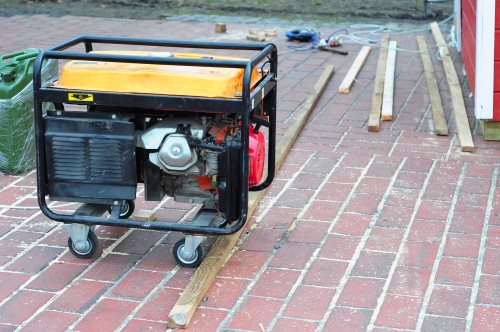
#1. Portable machines
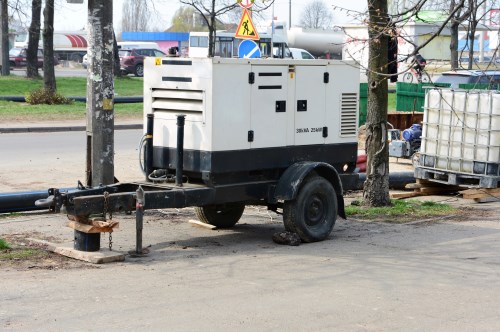
#2. Mobile machines
PORTABLE GENERATORS
Portable generators are small and compact machines. In general, these generators provide a medium amount of power (between 6 – 28 kW), can be easily moved around, stored out of your sight, and are much more affordable.
All these features make portable generators a perfect option for small and medium-sized projects.
Thanks to parallel kits, you can easily increase and double the maximum power provided.
MOBILE GENERATORS
Mobile generators can also be moved around but these machines are much larger. They usually provide much more power than portable generators (between 8 – 2000 kW) and are mounted on a trailer.
Thanks to this, mobile generators are well suited for nonroad applications. These machines are durable, portable, and usually weatherproof, but take up a lot of space and are much more expensive.
In the end, it’s up to you which unit suits your job site more.
Extra Features to look for
Besides the maximal volume of power, portability, and size of your generator, there are several other features you can consider while shopping for the best contractor generator for your job or construction site.
Our Generatorist team recommends considering the following features:
- Fuel Type – For job contractors, we recommend generators that are running on diesel as this type of fuel is more frequently used in other machines that are usually present on the job site. This way, your fuel management will be much easier.
- Long run time – The worst thing that can happen on a job-site is a downtime as it leads to profit loss. Every refueling takes your machine out of service for some time. Therefore, it is vital to get a generator that can run for a whole shift without the need to refuel. This way, you can do the refueling with basic maintenance after the work shift is over.
- Large gas tank – Although a large gas tank will diminish the portability of your generator, it will enable you to run it for a longer period of time without the need to refuel.
- Automatic idle control – The automatic idle control (also known as Eco Throttle or Smart Throttle) can save you a lot of fuel costs and can reduce the noise of your generator. It automatically adapts the rotations of your engine in relation to the actual load. If your generator runs idle, this system can significantly reduce the number of rotations per minute.
- Durable gas tank – With regards to a gas tank, you need to consider the material it has been built from. We recommend choosing a generator that has a metal fuel tank as it is much more durable. Although plastic fuel tanks are lighter and cheaper, they can get pierced easily at a job site. Also, they become brittle in extreme cold.
- Fuel gauge – A fuel gauge is a must have feature if you are going to get a generator for your job site. Without it, you will have a hard time effectively managing your fuel needs and you will face frequent downtimes.
- Automatic fuel priming system – Even if you have a fuel gauge on your unit, you need to check it from time to time. Although no one plans on running a generator completely dry, this happens quite often. Luckily, if you have an automatic fuel priming system, you don’t need to call a trained technician and there will be no extra downtime once you let your unit run dry. All it takes to restart your generator is adding fuel and turning the ignition key to the start position.
- Fuel-shutoff switch/valve – This valve becomes very handy especially during the transportation, maintenance, and storage of your generator. In case you need to store your generator for a longer period, you need to remove all fuel from the system to avoid clogging of the carburetor with gasoline that went bad.
- Automatic low-oil shut off – The automatic low-oil shutdown system will protect your engine against damage caused by low levels of oil. Without this feature, your machine can easily get destroyed by a sudden loss of engine oil and such a situation can endanger people on the job site as well.
- Electric start with manual recoil backup – Some people simply don’t know how to properly use the recoil pull start. Having a generator that can be started with just a single push of a button will significantly reduce the down time. We recommend getting a unit that offers both an electric start and recoil pull start option as a backup. In most cases, the battery of your generator that is responsible for electric start dies after not using your machine for longer periods. Once this happens, you will be glad you have that recoil backup start option.
- Maintenance-free electric battery with a trickle charger – If you decide to get a generator with an electric start, then go for one that offers a maintenance-free battery or a trickle charger. This way you will always have your generator ready to serve.
- Built-in inverter or automatic voltage regulation system – Having a stable current without any extreme fluctuations no matter the load or operating temperatures is vital if you don’t want to damage connected tools to your generator (especially those that have microprocessors in them). To achieve this, you need to get a unit either with an inbuilt inverter or an automatic voltage regulation system (AVR).
- Power bar / inbuilt wattage meter – The inbuilt wattage meter shows you how much power you already take from your generator. One look at the bar and you see whether you can plug in another tool right away or if doing so will trip the circuits. Just keep in mind that overloading your generator can cause unplanned downtime on your job site, and can damage the unit itself and all tools that are connected to it.
- Hour meters – As a contractor, you need to keep your generators well maintained and running all the time. A built-in hour meter will make sure you can keep the track of the run-time of your units to schedule the maintenance.
- Frequency Switch – If you know that you need to connect power tools that require different types of frequencies (some operate at 60 Hz while others at 50 Hz), then you need to look for a machine that offers a frequency switch. Just keep in mind that lower frequency will provide only around 80% of rated running power.
- Voltage Selector Switch – If you want to get the most out of your generator, then get a unit that offers a voltage selector switch. It will allow you to harness the most power while connecting a 120 volt tool to a 120/240 outlet. If you are connecting a 240 volt power tool into the 120/240 socket, you need to leave the switch in the “240 volt only” position and vice versa.
- GFCI Outlets – The GFCI abbreviation refers to a ground fault circuit interrupter. GFCI outlets have three wires (neutral, hot & ground) instead of just two (neutral & hot). Once the GFCI detects an imbalance of power flow, it trips the circuit. The Occupational Safety and Health Administration (OSHA) and National Electric Code (NEC) require these outlets on construction sites, bathrooms, and anywhere else where electricity is close to a water source, such as swimming pools.
- Covered Outlets – If you are a contractor working on a dusty construction site, you should consider a generator that has covered outlets. Without these, your outlets can easily get clogged by dirt and dust and your machine will need extra maintenance and downtime.
- Durable, Sturdy Frame – A job site can be quite harsh to the equipment used. That is why you need to invest in a generator that has a sturdy wraparound metal frame. Look for a beefy roll cage and ideally a metal shielding.
- Wheel Kit & Lifting Eyes – We always recommend getting a generator that is already equipped with a wheel kit. Although 4 wheels may sound like a great idea, they work smoothly only on flat surfaces. If you want a generator for a job site with rough terrain, choose a unit with two wheels that are semisolid as they are resistant to puncture and they still bounce. If you intend to move your generator around with a forklift or a boom crane, then look for a unit with lifting hook/eyes.
- EPA Tier IV (if diesel) – If you have a generator that runs on diesel, then look for a Tier IV certification by the EPA (U.S. Environmental Protection Agency). Tier IV is the highest certification for non-emergency diesel generators with regard to the amount of emissions produced.
- Quietness – Some job sites are located in areas with very strict noise limits. So, if noise is your main concern, then choose a durable professional generator with a muffler and noise-reducing construction. If you can fit an inverter generator to your power needs, then we highly recommend it as there are not many generators that are quieter than inverters.
- CARB Certification – If you are working in California, then you can only use a generator whose levels of emissions have been certified by the California Air Resources Board (CARB).
- Spark Arrestor – This is a helpful piece of equipment that minimizes the chance of setting dry vegetation on fire. Some areas restrict the use of generators to only those including spark arrestors.
Just keep in mind that each one of these features will increase the final price of your generator. That is why you need to consider your budget and prioritize each one of these features.
What we consider to be a necessity may not be so important for you and vice versa.
things to consider
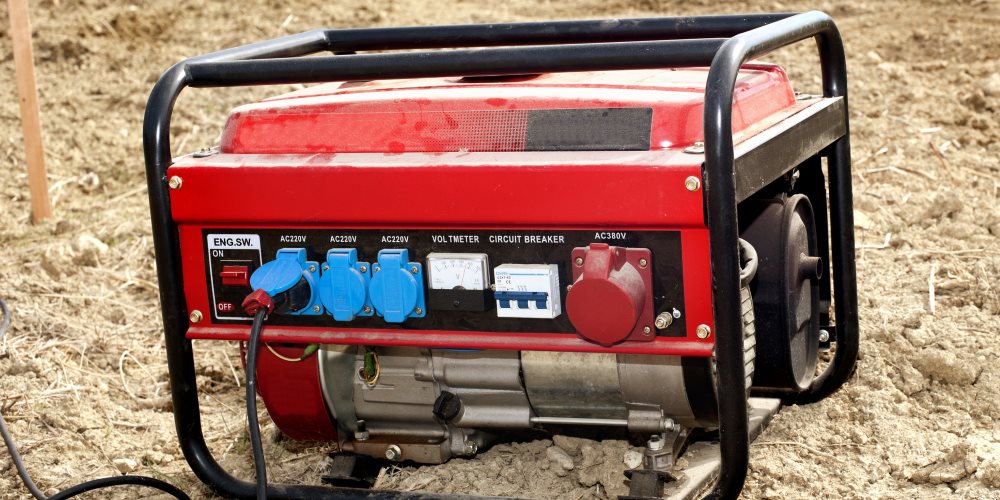
A lot of people rush into getting a portable generator as a backup power source without considering its downsides. Although contractors usually have a lot of experience with portable generators, we are still adding this section of the most overlooked downsides of getting and using a portable generator.
regular maintenance
A lot of contractors do not realize the value of having a good maintenance plan for their equipment prepared in advance. Thanks to this, the chances of unexpected downtimes are minimized to almost zero.
The maintenance should be done by an expert.
If you have a professional heavy-duty generator at your job site, it is best to leave the execution of your maintenance plan to a supplier who employs highly trained and certified technicians.
Storage requirements
Storing your generator may not be as easy as it may seem in the first place. The most comfortable way to store your unit is to get a wheel kit and a foldable handle to easily move your machine around.
Also, you need to keep in mind that if you are going to store it for a longer time, you should either drain all the gas from your generator or add a fuel stabilizer into the tank and let it run for a while as otherwise, the gas inside will go bad and will create gum deposits that will clog your carburetor.
While draining your fuel, you will find a manual fuel-shutoff switch to be a very practical feature. You can find more detailed tips for storing your portable generator in our dedicated guide.
local Laws & regulations
Before you go and buy your generator, it is always the best idea to learn whether there are any local laws and regulations that could limit the number of generators you can choose from.
Some states, municipalities, and areas limit the highest allowed noise while others limit the maximum allowed amount of air pollution.
Just ask your local dealer of generators and if they are professionals, they will be able to give you every piece of legislation and regulation that your generator needs to meet if you want to use it on your job site.
Altitude of Job Site
A lot of people underestimate the fact that the altitude of your job site highly affects the performance of your generator. If you are going to use your machine at higher elevations, it will have reduced performance.
There is a general rule that you need to take into consideration:
That is why you need to select a more powerful unit to offset the diminished output if you are preparing yourself for a job in high altitude areas. If you are planning a job in high altitudes, you need to count on low temperatures as well.
That is why you will need to get a generator with an “arctic package” that includes heavy-duty batteries, block heaters, and battery chargers.
Carbon monoxide
Sadly, even these days people are dying from carbon monoxide poisoning related to the wrong usage of generators each year. They don’t realize (or just underestimate) the fact that fumes from their generators are poisonous.
The worst part? Carbon monoxide is an odorless and colorless gas.
That is why you should never run any generator inside an enclosed space or too close to your or other homes (including open doors and windows) as you could be poisoning yourself or others without even realizing it.
Sadly, the detection of this poisonous gas is almost impossible unless you install a carbon monoxide detector.
FINAL WORDS:
Thank you for reading our shopping guide. We hope you have found every piece of information you were looking for. If you still have any questions, feel free to ask in the comments section below.
Also, have a look at other posts we have published and let us know how we can make them better.
PICK YOUR MACHINE:
About Generatorist

Matthew Gerther
Founder, Generator enthusiast
Our aim here at the Generatorist is to become the No. 1 resource for all things related to generators & your power needs. We have helped over 600,000 visitors with our tips, articles and reviews and we will help you as well.
Our work has been featured in many publications around the world – Yahoo.com, Telegram.com, PaylessPower.com, PopSci.com, TopTenReviews.com, TechRepublic.com, iRV2.com, ThePrepared.com, Renogy.com or ADT Solar. Generators are our passion, and we strive to provide the most reliable & most comprehensive information out there.



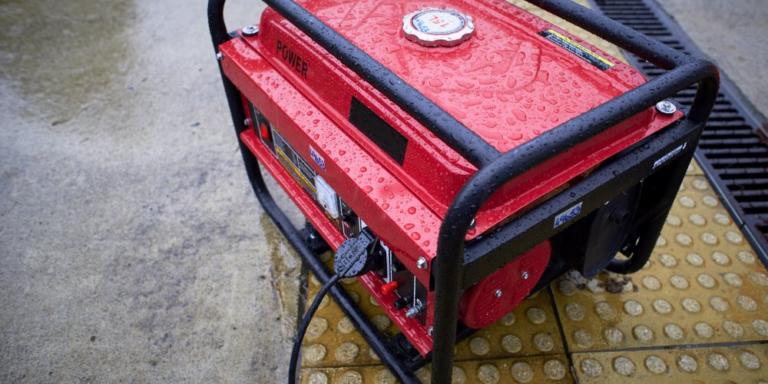
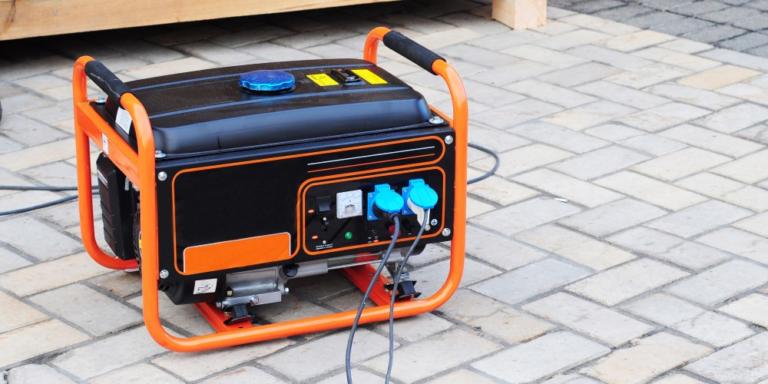
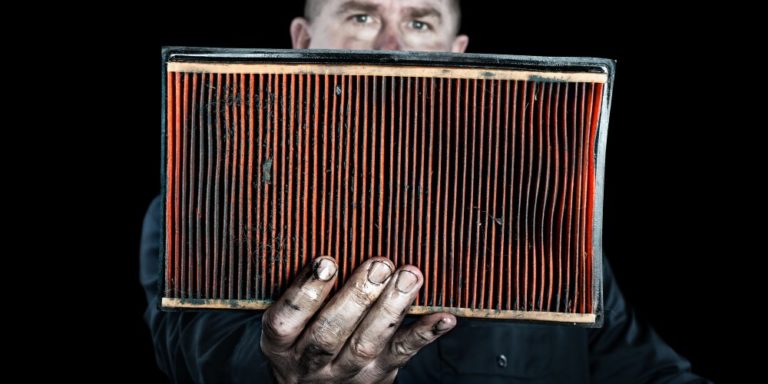
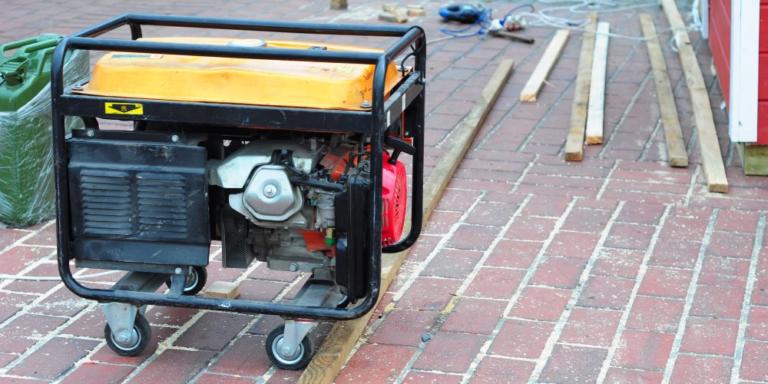
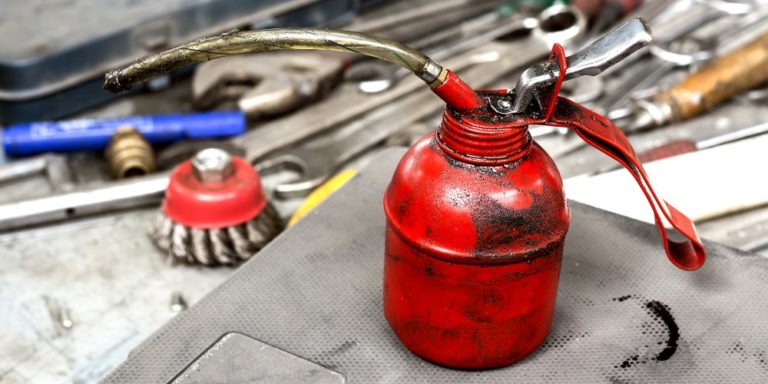

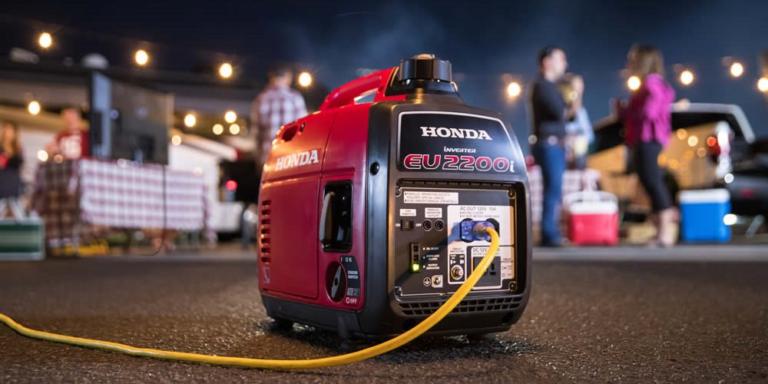
1 thought on “Choosing the Best Generator for Construction Site: Tips & More”
I’m glad that you mention that you need to figure out what size of generator you need. Maybe it would be good to start by figuring out where you want it and then consider how long you want the generator to be able to provide power. You could then go online to research sizes and brands to find one that fits your requirements.